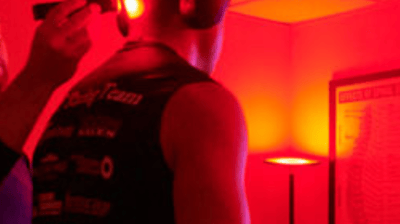Vagus Nerve Rehabilitation
Vagus nerve rehabilitation refers to therapeutic interventions and exercises aimed at stimulating and restoring the optimal function of the vagus nerve. The vagus nerve is a major cranial nerve that plays a crucial role in regulating various bodily functions, including heart rate, digestion, and stress response.


Photobiomodulation
Photobiomodulation can aid in vagus nerve rehab by utilizing specific wavelengths of light to stimulate and modulate the activity of the vagus nerve. When applied to the skin or targeted areas, the light energy penetrates the tissues and stimulates cellular processes, promoting nerve regeneration, reducing inflammation, and enhancing overall neural function. Photobiomodulation has been shown to improve vagal tone leading to improved autonomic regulation.
Primitive Reflex Integration
By targeting and integrating primitive reflexes through specific therapeutic techniques, such as reflex integration exercises or movement-based interventions, it is possible to promote neurodevelopmental maturation and enhance vagal tone. The integration of primitive reflexes can support the development of a well-regulated autonomic nervous system, including the vagus nerve, leading to improved emotional regulation.






Neurofeedback
Neurofeedback can be a valuable tool in vagus nerve rehab by promoting self-regulation and enhancing vagal tone. Neurofeedback can specifically target brain areas and frequencies associated with vagal function, such as the prefrontal cortex and the alpha frequency range. By training these areas and frequencies, individuals can enhance their ability to regulate autonomic functions, including vagal activity.
